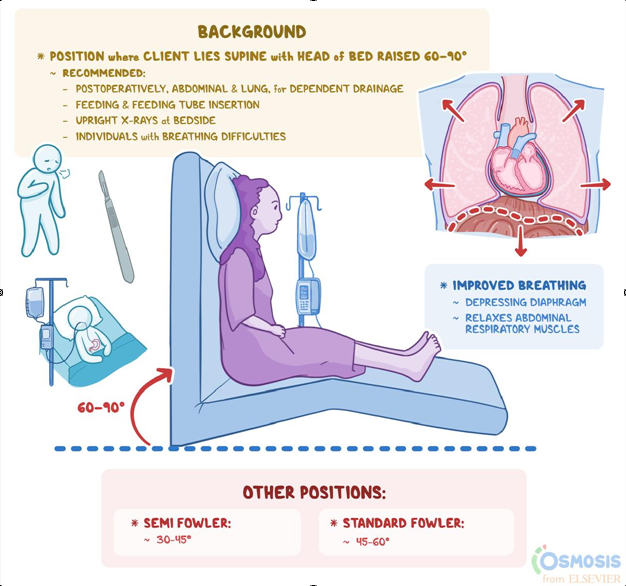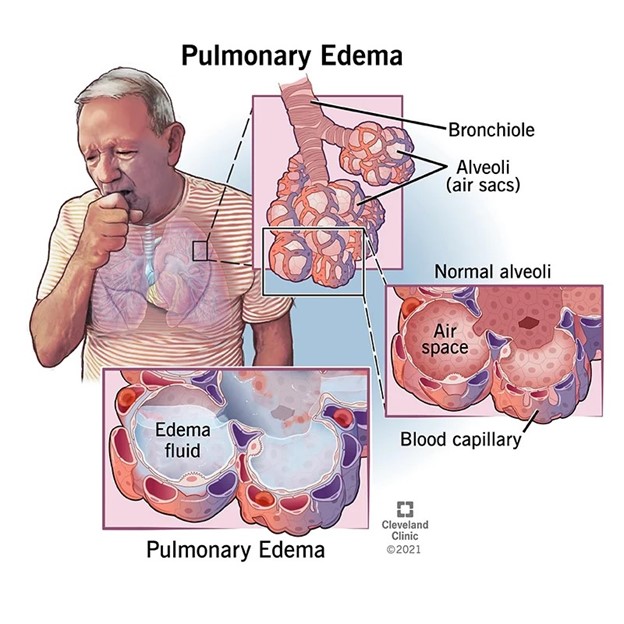A nurse is caring for a client who has a prescription for NPH insulin 10 units and regular insulin 15 units subcutaneously. After injecting 10 units of air into the NPH insulin vial, which of the following actions should the nurse take next?
Verify the dosage with another nurse.
Inject 15 units of air into the regular insulin vial.
Withdraw 10 units of NPH insulin.
Place the cap over the needle.
The Correct Answer is B
This step is part of the process when mixing NPH and regular insulin in a single syringe. After injecting air into the NPH insulin vial, you should inject an equal amount of air (in this case, 15 units) into the regular insulin vial to maintain pressure balance. This allows for easy withdrawal of the prescribed doses of each insulin type in the same syringe without causing a vacuum in the vials.
After injecting air into the NPH insulin vial (step 1), the nurse should proceed to inject air into the regular insulin vial (step 2) before withdrawing the insulin doses in the subsequent steps.
Verifying the dosage with another nurse is not necessary in this step, as it is done prior to drawing up the insulin. However, it is good practice to have another nurse double-check the dosage before administration.
Injecting air into the regular insulin vial is not required at this stage. It is only necessary when withdrawing the regular insulin dose.
Placing the cap over the needle should be done after withdrawing the desired dose of insulin and before administering it to the client for safety and to prevent needlestick injuries.
The correct sequence when mixing NPH and regular insulin in a single syringe is as follows:
- Inject air into the NPH insulin vial (in this case, 10 units of air).
- Inject air into the regular insulin vial (in this case, 15 units of air).
- Withdraw the prescribed dose of NPH insulin (10 units) from the NPH vial.
- Withdraw the prescribed dose of regular insulin (15 units) from the regular insulin vial.
So, after injecting air into the NPH insulin vial (step 1), the nurse should proceed to inject air into the regular insulin vial (step 2) before withdrawing the insulin doses in the subsequent steps.
Nursing Test Bank
Naxlex Comprehensive Predictor Exams
Related Questions
Correct Answer is D
Explanation
Explanation
D. Maintain the client in high-Flower’s position
Crackles in the bases of the lungs, shortness of breath, and an increased respiratory rate are signs of pulmonary congestion, which is commonly seen in heart failure. Maintaining the client in a high-Fowler's position, with the head of the bed elevated to a 45-60-degree angle, helps reduce venous return to the heart, decreases fluid accumulation in the lungs, and improves breathing comfort for the client.
The other options are not appropriate actions for the client's condition:
Instructing the client to cough every 4 hours in (option A) is not the priority action in this situation. Coughing may not effectively address the underlying cause of pulmonary congestion and may not provide immediate relief for the client.
Encouraging the client to ambulate to loosen secretions in (option B) is not the priority action in this situation. While ambulation can be beneficial for overall health, the client's symptoms of pulmonary congestion require immediate attention to improve respiratory status.
Increasing the client's intake of oral fluids in (option C) is not the priority action in this situation. While maintaining adequate hydration is important, excessive fluid intake can worsen the symptoms of heart failure and contribute to further fluid accumulation in the lungs.
Therefore, the nurse should maintain the client in high-Fowler's position (option D) to promote optimal lung function and improve breathing comfort. It is important to promptly notify the healthcare provider of the client's condition for further assessment and intervention.

Correct Answer is C
Explanation
Fluid overload refers to an excess volume of fluid in the body, which can occur as a result of various factors, including excessive fluid intake or inadequate fluid removal. Crackles heard in the lungs, also known as rales, can indicate fluid accumulation in the lungs, a condition known as pulmonary edema. It is a common manifestation of fluid overload and can be detected through auscultation of the lungs.

Weight loss is typically associated with inadequate calorie or nutrient intake, rather than fluid overload.
Weight loss is typically associated with inadequate calorie or nutrient intake, rather than fluid overload.
Weight loss is typically associated with inadequate calorie or nutrient intake, rather than fluid overload.
Whether you are a student looking to ace your exams or a practicing nurse seeking to enhance your expertise , our nursing education contents will empower you with the confidence and competence to make a difference in the lives of patients and become a respected leader in the healthcare field.
Visit Naxlex, invest in your future and unlock endless possibilities with our unparalleled nursing education contents today
Report Wrong Answer on the Current Question
Do you disagree with the answer? If yes, what is your expected answer? Explain.
Kindly be descriptive with the issue you are facing.
